In the elementary years, kids often rate science as one of their favorite subjects. After all, who doesn’t love learning about clouds and rain, rocks and volcanos, how the heart pumps blood, and the life cycle of frogs?
The transition to sciences like physics and chemistry can seem like a departure from the beauty and wonder of biological and physical sciences. Suddenly, students must do long series of math equations and formulas, study complicated charts and graphs, and apply rules and principles.
Yet, the same hands-on and wonder-based approach kids enjoyed in other sciences is still possible in advanced sciences. The key is to introduce concepts like chemistry and the Periodic Table of Elements in a way that is practical and relatable.
There’s a saying that goes, “What in the world ISN’T Chemistry?” because everything we see is made up of elements (not necessarily as pure elements, but in their ionic, compound, and mixture forms!). Showing kids where they are most likely to encounter each element makes learning chemistry memorable and practical.
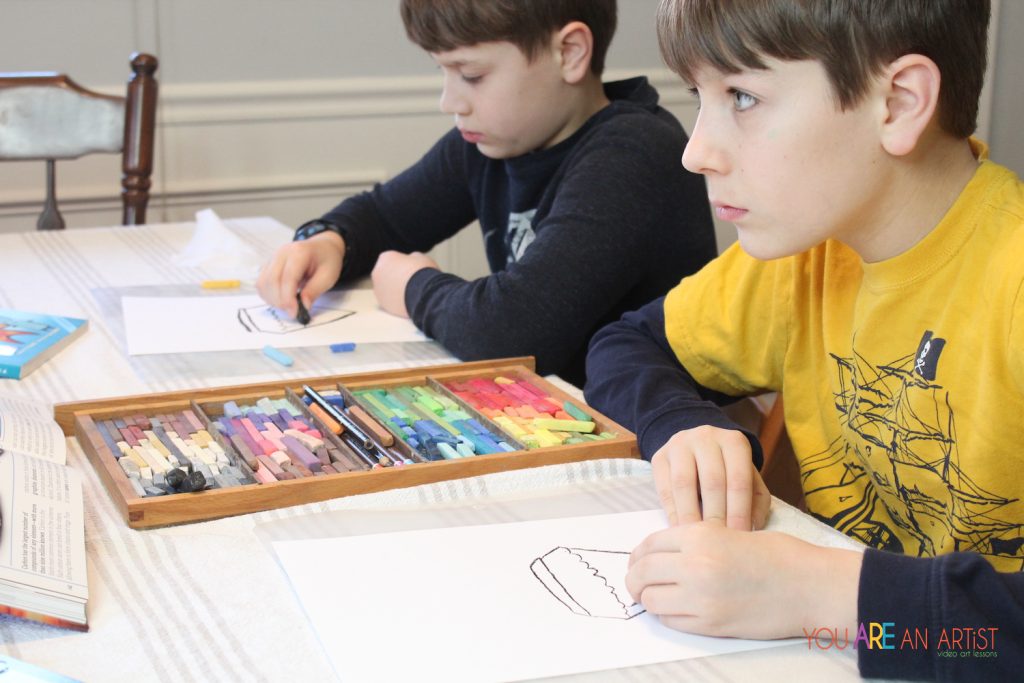
The Value Of Adding Art To Science For Kids
It’s one thing to look at a bunch of colored boxes on the Periodic Table. It’s quite another to create colorful flags celebrating each element and its usefulness in our everyday lives! Using art to explore science adds value to the drier facts in the textbook.
Art engages students in learning because it is tactile and interactive. Sure, I’ve had my kids memorize a few of the elements, their name, symbol, and atomic number, but always with some kind of visual cue. When we add art to the mix, now my kids become active in their learning process. They can take the information coming into their brains and express it on the page—with color!
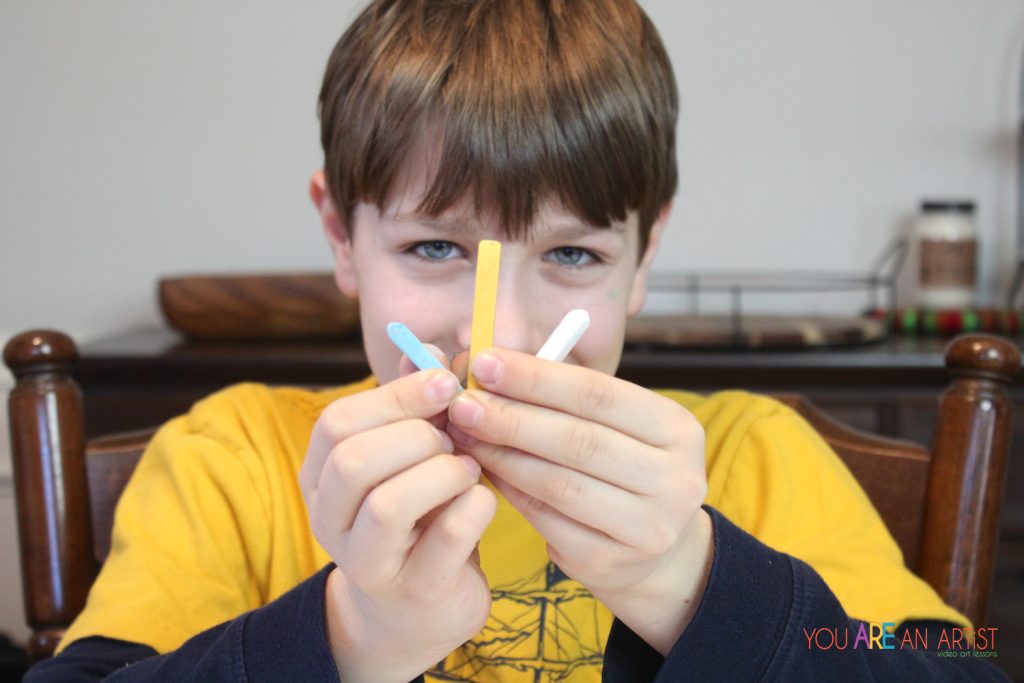
The more of the five senses kids use while they are learning, the more memorable the learning becomes. After all, we want these facts to stick in our children’s minds, so they can access the information later when they need it. Adding art to science lessons gives the learning extra value, because kids are layering in another of their five senses.
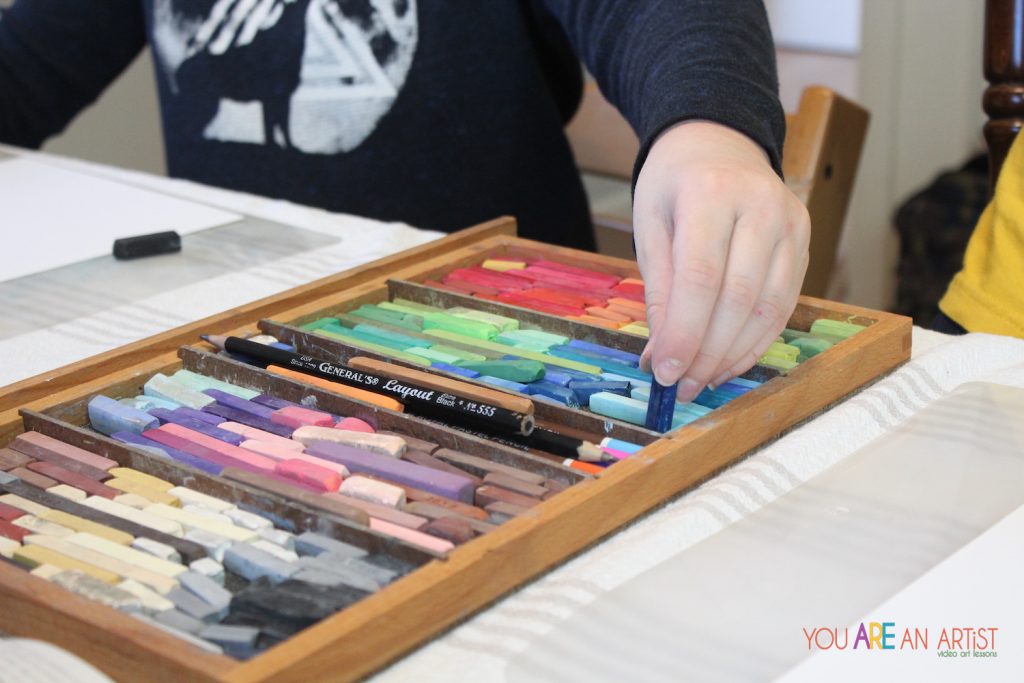
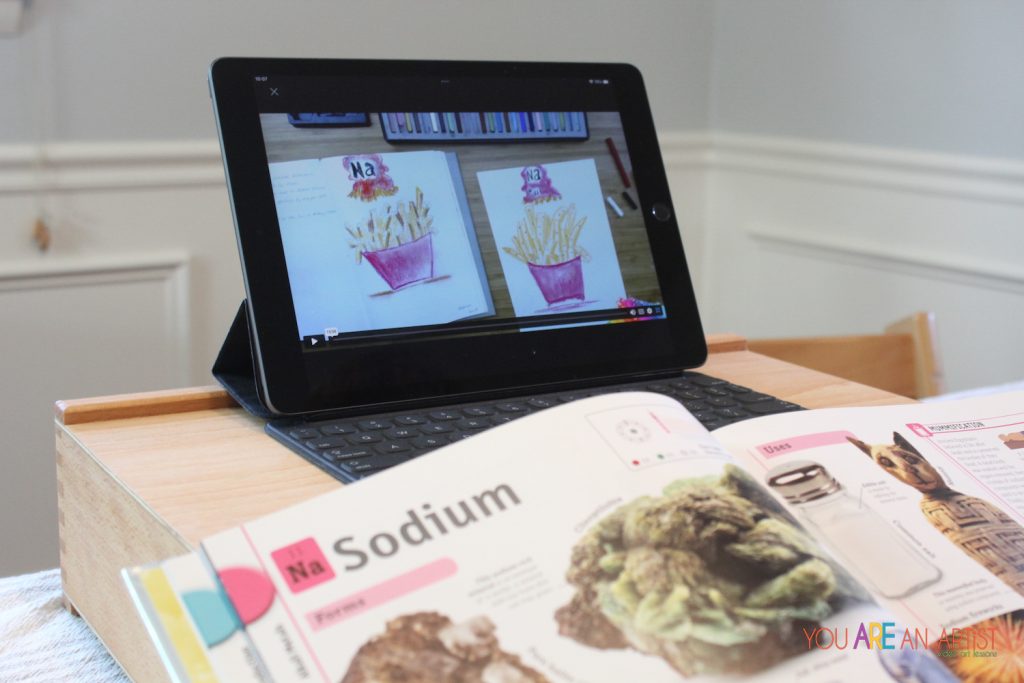
Introducing The Periodic Table To Kids
When it comes to learning chemistry, knowing everything on the Periodic Table isn’t necessarily the primary goal. My husband teaches high school chemistry and in his class, he focuses initially on having students learn categories and groupings of elements. He even includes a wee little bit of art by having them color-code a blank periodic table to reflect the different groupings of the elements. Understanding how elements are related and have similar reactions is more important than simply filling out a blank table by rote.
In Nana’s latest addition to the I Drew It Then I Knew It Science series, you’ll find two lessons featuring the very common elements of Sodium and Carbon.
Practically speaking, most of us will rarely encounter a pure element, like sodium in our day-to-day lives. Kids might hear grownups talking about “watching their sodium” in their food, but that won’t hold much meaning for them.
However, I have not met a kid yet who doesn’t perk up at the mention of french fries! Wait till your kids find out that the element sodium is a huge factor in what makes their drive-through snack so tasty!

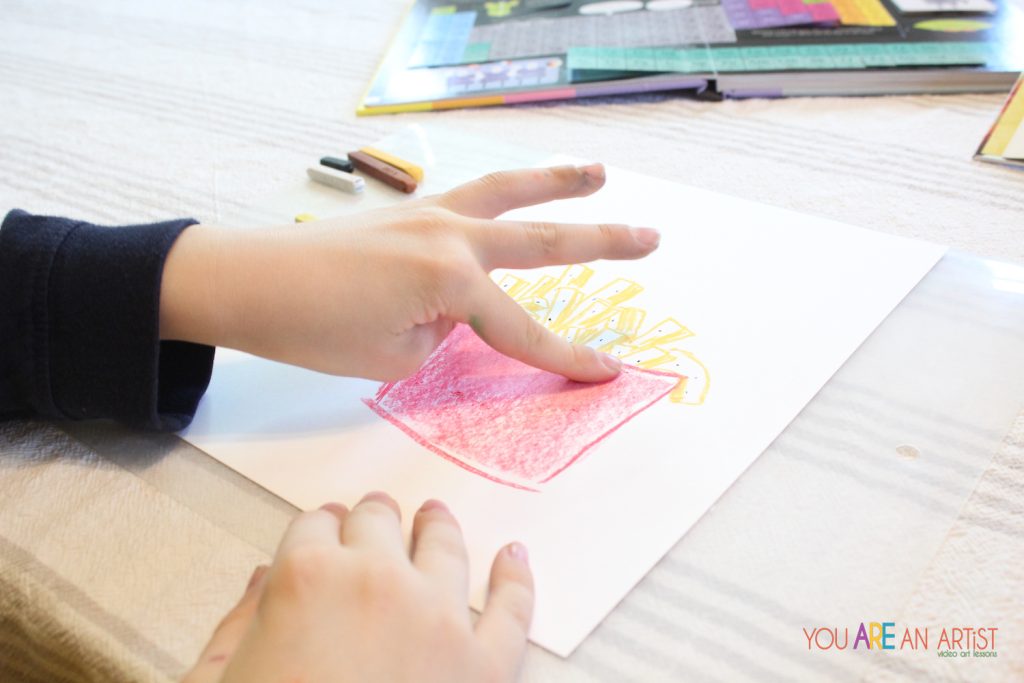
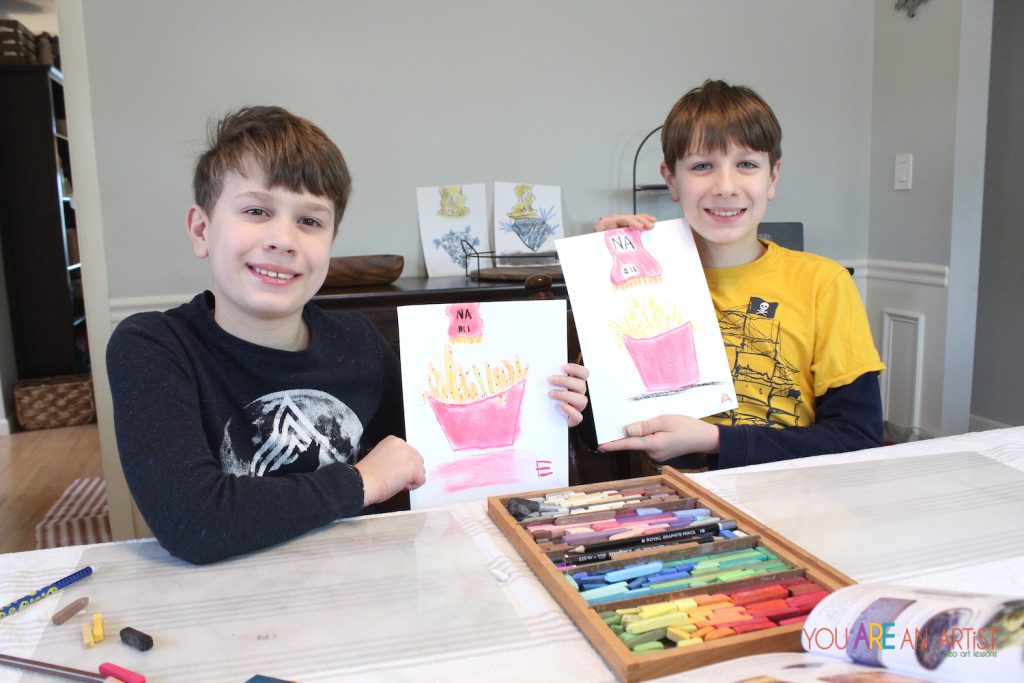
As Nana lead my boys through drawing a carton of vibrant golden French Fries studded with savory salt (sodium chloride), they both agreed the entire lesson made them hungry! Nana shared facts about the element sodium as she demonstrated how to paint these savory spuds. I just love how she asks questions right at my kids in her videos. It always makes them stop and think (or at least, they don’t daydream!). Or sometimes, she’ll do a little storytelling, painting a word picture of a scene in which they might find themselves face to face with: Sodium!
Included in the Sodium chalk pastel art lesson were the important details about sodium’s name, symbol, and atomic number. But instead of plunking this information down in a box that looks like all the other boxes on the periodic table, Nana has the kids paint the information onto a flag at the top of their picture. It makes the lesson feel so celebratory!
The boys also completed the element Carbon video art lesson. In this lesson they learned about this nonmetallic element, and how it is found everywhere from their own bodies to precious gems like diamonds.
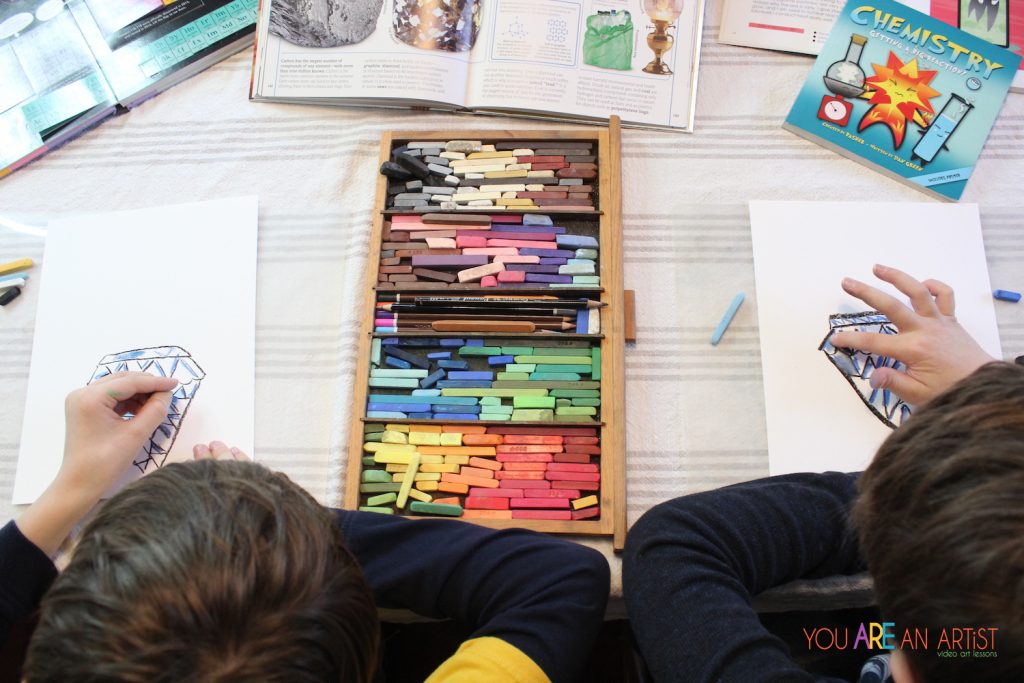
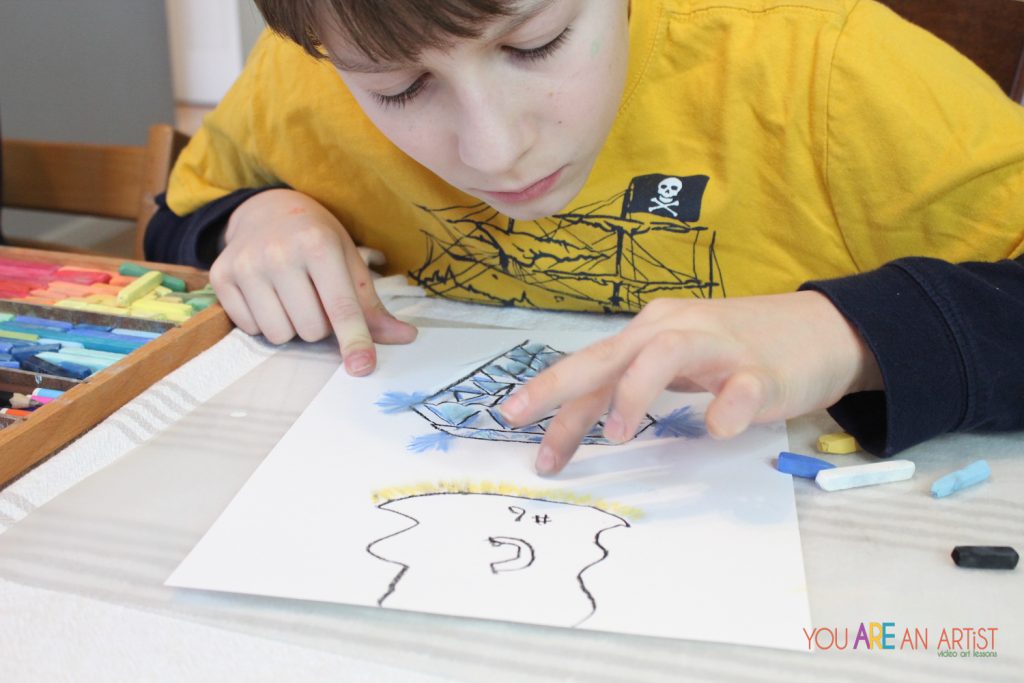
Nana builds excitement by telling kids that Carbon is called “the glue of life.” Plus, she introduces important chemistry terms like “bonding” and “compounds.” I think it’s great for kids to hear these terms when they are younger, so when they get to high school, they will feel more familiar and excited about learning chemistry.
Again, Nana shared background information on the element Carbon. She’s collected facts and speaks of the science of the elements so naturally, that my boys found learning about Sodium and Carbon a fascinating time.
Drawing a many-faceted diamond that sparkled off the page will certainly be a memorable experience for my kids. I love that Nana takes something that could be dry and flat on the page, and creates a sense of wonder at how we’re surrounded by elements that make up fantastic and priceless things in our world.
Certainly, painting french fries and diamonds was not on my radar when I thought about introducing the periodic table to my kids. But now, I wonder what else Nana will share with students in future Elements lessons!
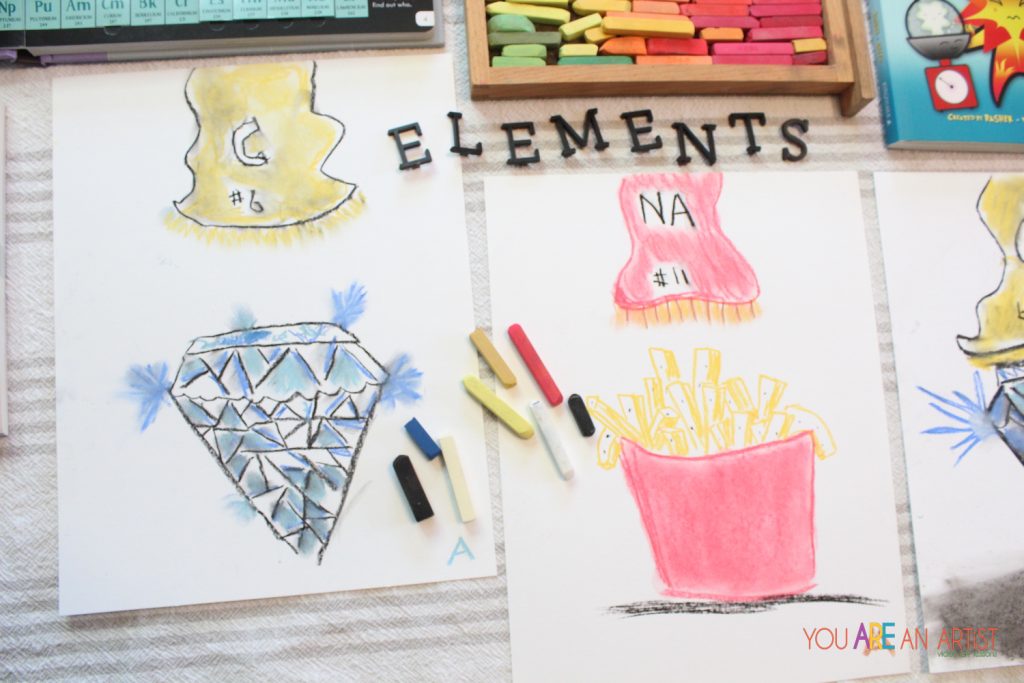
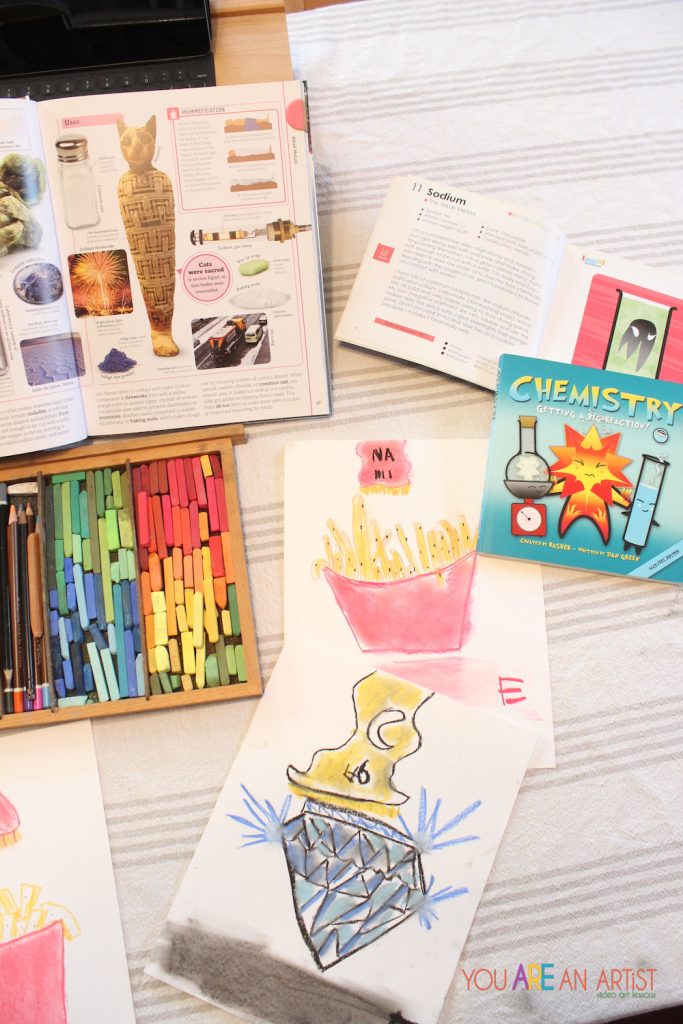
More Hands-On Science Activities
If you think drawing the elements makes science more interesting, just wait until you see the long list (and growing) of science lessons from Chalk Pastel.
Kids can explore the intricate details of the human body with visually appealing lessons on the skeletal system, cells, bacterium, and various body parts like the diagram of the eye, ear, and heart.
If you’re studying biology, try out the many backyard nature art lessons, backyard birds lessons, and even an art lesson on the frog cycle (perfect for spring!).
Astronaut enthusiasts will adore swiping their chalk across black paper to create the planets in the solar system, the moon missions, and more space exploration topics.
Don’t forget to celebrate with art the various scientists and famous inventors who dedicated their lives to exploring the beauty of this world.
Chalk pastel art lessons merge visual and tactile experiences with the solid facts of science study. So you can feel well supported in leading your children through their lessons, knowing they will be delighted to watch and copy Nana’s model instruction.
I’m sure soon they’ll be wondering what other elements of science can they explore through art!
You ARE an Artist video lessons are constantly being added to, and the I Drew It Then I Knew It series come with curriculum workbooks that offer you facts, planners, and other resources. Homeschool families can even design a plan of study in chalk pastel art that will count as high school credit.
Get access to the exciting world of art for any subject in your homeschool by signing up for a You ARE an Artist Clubhouse membership. Nana has created lessons on a diverse range of subjects from History to Literature, Geography to current events! Each lesson is a real treat because of Nana’s calm and encouraging teaching style that captivates and invites young artists to explore knowledge that is right at their fingertips… literally!
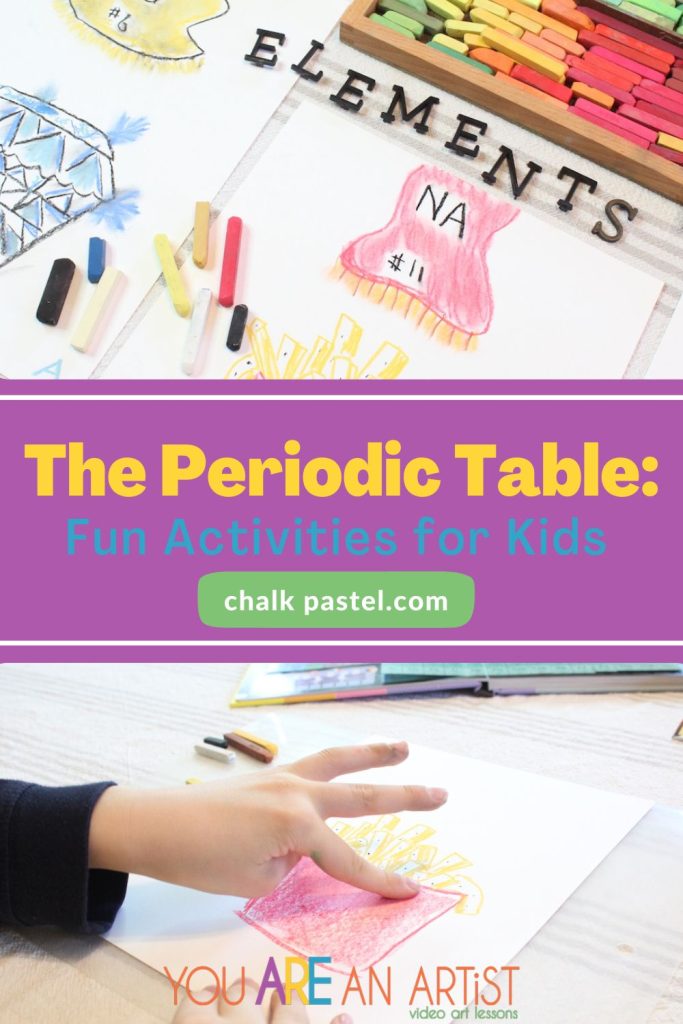

Julie is a teacher, writer and homeschool mom. Her blog Happy Strong Home shares encouragement for cherishing children, enjoying motherhood, and growing strong families. Discover homeschool resources, natural living tips, and family activity ideas. Julie has been featured on Million Praying Moms, The Old Schoolhouse Magazine, and the Melissa and Doug blog. She offers writing workshops and a “homeschool neighborhood” community to support parents in their homeschool adventures. Find Julie on Instagram to be the first to know when new workshops and community events are available.
